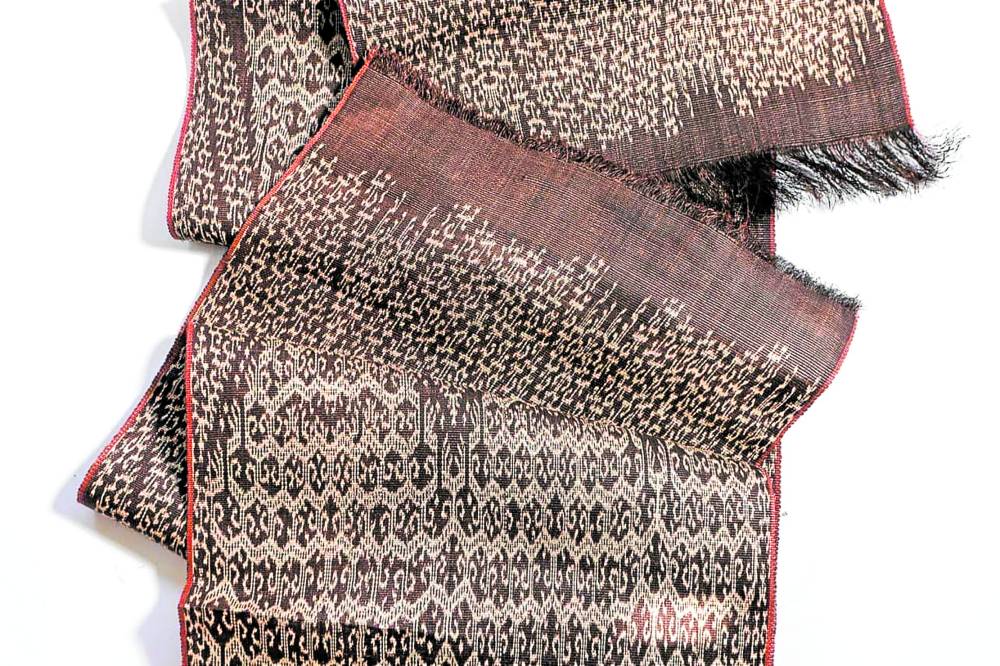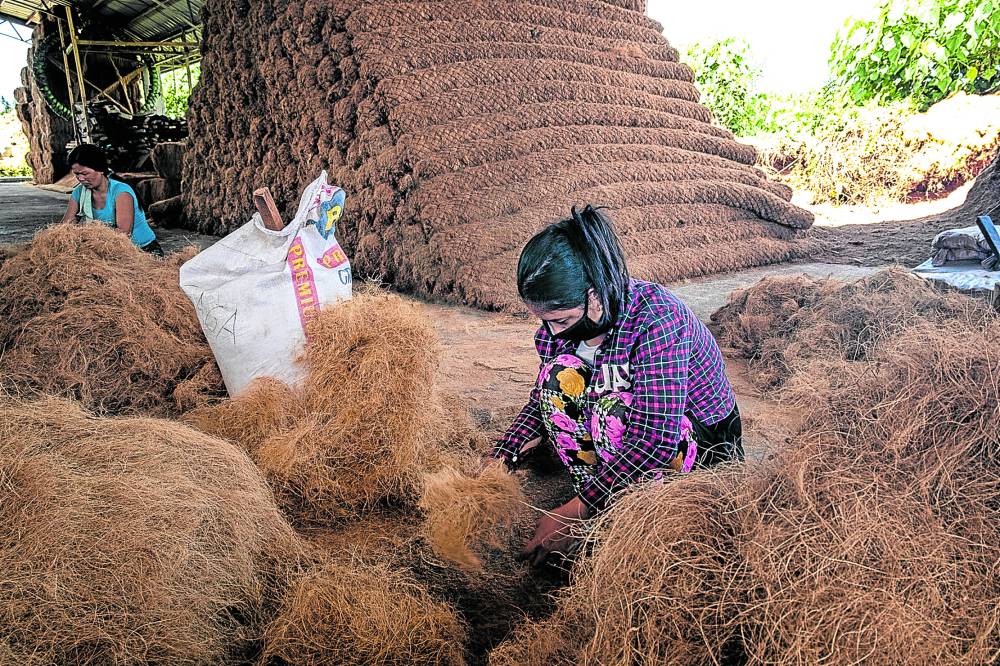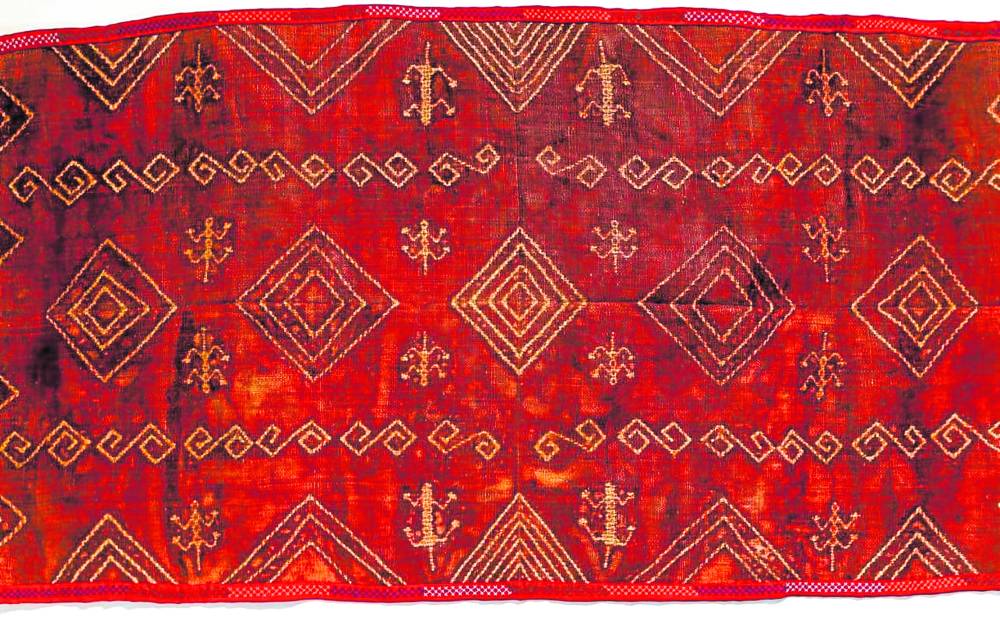
With the growing interest in Filipino weaves, a local group that champions piña fabric has come up with a separate competition this year that trains the spotlight on abaca. Known worldwide as Manila hemp, the nubby material is woven in Mindanao among the T’boli and other indigenous groups, the Visayas and the Bicol region, where the plant thrives.
As part of its Likhang Habi Market Fair in October, Habi Philippine Textile Council will hold the Eloisa Hizon Gomez competition, which is open to all local abaca weavers. It is named after the late mother of former fashion designer Gang Gomez, who is now a Benedictine monk in Bukidnon known as Dom Martin Gomez.
Even as a contemplative monk, Gomez continues to work with local weavers to develop and innovate traditional textiles, while also designing church vestments. He approached Habi with the idea of holding a competition for abaca artisans, which is supported by his vision of upscaled and refined craftsmanship for the industry.
“I am truly grateful to Habi for naming this competition after my mother who truly loved our indigenous weaves and, during her lifetime, always supported my advocacy for the preservation of Filipino traditional arts and crafts,” Gomez told Lifestyle in an email.
100-percent abaca

To join the competition, participants must submit a panel measuring at least 6 meters long. There are no restrictions on the width, but entries must be made of 100-percent abaca and be based on a traditional pattern and/or weaving technique. Three winners will be chosen and will each receive a cash prize of P50,000.
Habi president Adelaida Lim is optimistic that aside from stimulating the creativity of artisans, the competition will strengthen and grow the industry.
“Joining a competition always brings out the best in us,” Gomez said. “The challenge to submit something special—perhaps even some abaca weave style which has not been done before—or be able to revive something so beautiful from the past but which has not been seen lately, will surely help to spur a resurgence in the use of abaca, our truly Filipino indigenous textile.”
Abaca is one of the country’s major export products and is plaited into ropes used by the maritime industry, while abaca fibers are incorporated into the the Japanese yen. “We have even acquired new uses for it, such as in the manufacturing of automobiles,” Lim said in a statement.

In the book “Piña” by Lourdes R. Montinola, she writes that abaca comes from a species of plantain indigenous to the country. “It was already being woven into cloth all over the Philippines long before the arrival of the Spanish…The weaving of the fibers has been an important industry mainly in the Bicol provinces, especially Albay, and also in Panay, Bohol, Samar, Batangas, Cavite and other areas where abaca is grown.”
As dress material, abaca fabric (sinamay) is sturdy, as evidenced by the floor-length evening gown by designer Ben Farrales originally worn by Bambi Harper in the 1950s. The gown paired with a raffia overcoat is currently on exhibit at Benilde’s Design and Arts campus in Manila.
Tradition
“Sinamay is made of pure abaca, or of a mixture of abaca and cotton (called sinulit), or piña, or silk,” Montinola writes in her book.
Len Cabili, who is one of the organizers of the competition, told Lifestyle that they require all entries to be made from 100-percent pure abaca material, as “that has been the tradition; this is a way to keep the tradition alive.”
The founder and artistic director of Filip+Inna said the competition is a chance for weavers around the Philippines to show off their work. “Some of them have not been fully recognized, like the tritik of Tagakaolo. Through this competition, awareness of the different textiles using abaca will be celebrated and highlighted,” she added.

Gomez is more open to the idea of abaca blend entries in the future. “For the first year of the weaving competition, it is certainly wise to concentrate first on pure abaca weaves, to explore more fully the possibilities of abaca itself.
“This is not to say that abaca cannot work well with other fibers, for in fact abaca can also be blended creatively with other natural fibers also found in the Philippines like silk, cotton and linen, but that could be done in the next years of the competition.”
Each entry must have a title, a detailed description, and a photograph showing the weaver working on his/her entry. Entries must be packed with care and submitted to the Habi office at 962 May St., Mandaluyong City. Deadline for submission is on Sept. 30.
The entries will be exhibited as part of the October fair and sold, should the contestants agree. These pieces will be displayed alongside entries of the Lourdes Montinola Piña Weaving Competition, making them officially part of a Habi Market Fair annual tradition.
Habi: The Philippine Textile Council: tel. no. (0921) 849-6974 or email [email protected]













































